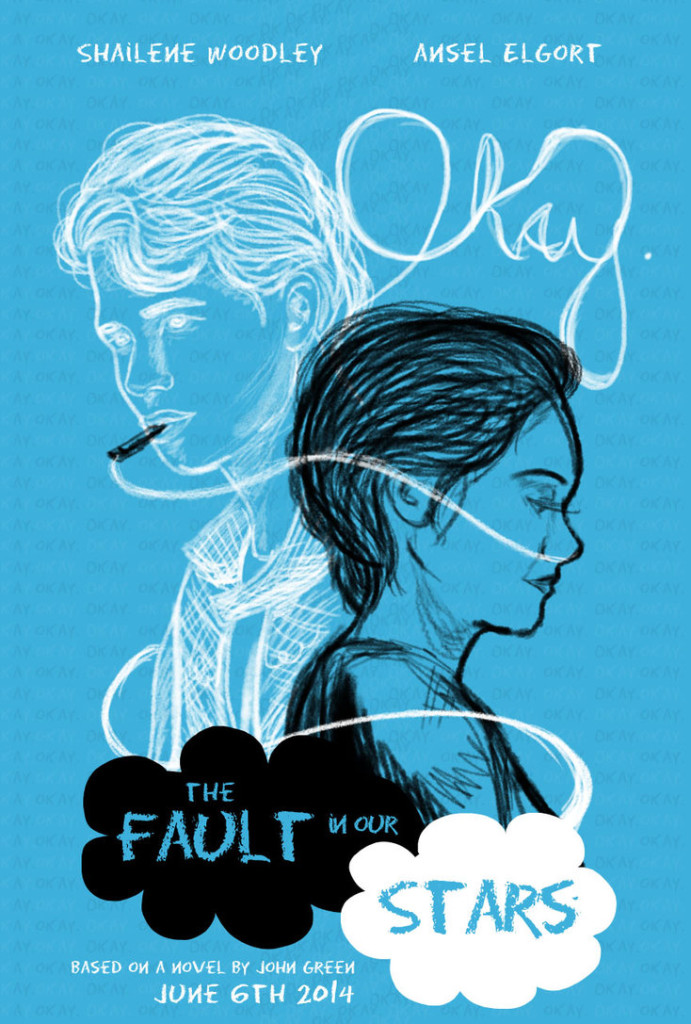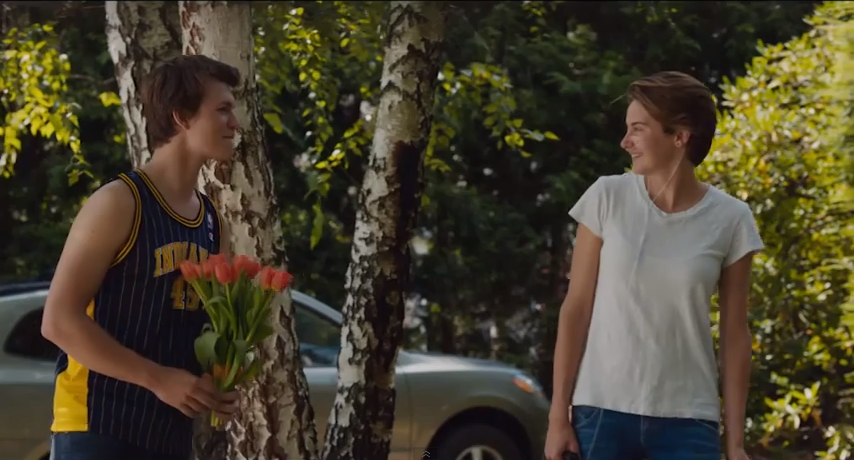Genre: Romance/Drama
Premise: (from IMDB) A cancer-stricken teenager falls in love with a young man who inspires her to seek answers about a mystery she’s been dying to figure out.
About: You gotta give it to Scott Neustadter and Michael Weber. These guys have found their niche, and they’re pretty darn good at it. That’s really all you can ask for as a professional screenwriter, to be the ‘go-to’ guys in a particular genre. Starting with 500 Days of Summer, about the realities of relationships, they moved to The Spectacular Now, which was about alcoholism, then this, which is about cancer, and next will be a another high school movie, about suicide. Young demo fare that has a little extra kick to it. And “Stars” looks like it’s going to be their biggest hit to date. As I noted in my newsletter, the book the script is based on has over 15,000 reviews on Amazon. The Holy Bible has 11,000 reviews. Hallelujah, John Green.
Writers: Scott Neustadter and Michael H. Weber (based on the novel by John Green)
Details: 115 pages (second draft – June 11, 2012)
How this freaking screenplay got me, I have no idea. I went into this fully expecting to hate it. Cancer never works in movie form. It just doesn’t. It’s too depressing. I think that’s why it took people so long to jump on the Breaking Bad bandwagon. They had to hear from at least 5 people that it was an awesome show before they finally, begrudgingly said, “Okay! I’ll watch your freaking cancer show!”
The number of cancer scripts that are written despite this is staggeringly high. People like to write about cancer! There were like 8 Black List scripts covering the C word last year. I think it’s because writers assume their script is “deep” if it’s about cancer. Their script is going to be taken seriously because it’s, like, tackling serious stuff ‘n shit.
This always backfires though. That’s because cancer is, almost by definition, melodramatic. And nearly every one of these movies hits a tired formula: A guy hates his life, meets a cancer chick. She shows him how to live every day to its fullest. Then the cancer hits her hard. Man Cry. Then she dies. But it’s okay because he’s learned something from her. Ahhh! Kill me now (no pun intended). That’s what I thought I was up for here.
But damn you, novelist John Green. You got me. You got me good.
16 year-old Hazel Grace Lancaster has had cancer since she was 13. Luckily, one of the 1 in a million experimental drugs worked on her and is currently keeping her cancer at bay. The problem is, the cancer has decimated her lungs and she requires oxygen tanks wherever she goes or else she faints.
Hazel has a pretty good attitude about the whole thing, but it isn’t until she meets Augustus that she realizes how much better it can be. Augustus comes to a cancer support group to support his buddy Isaac, and that’s where he sees Hazel and instantly falls in love with her.
Augustus is no stranger to this ugly disease though. He once had cancer himself and they ended up having to chop his leg off in the process. Now if you’re anything like me, you’re looking at this and going, “Who the f*ck doesn’t have cancer in this story? Does the dog have cancer? Does the goldfish have cancer?” Guys, I don’t know how they did it. But despite all the coincidences, they somehow make all of this feel natural. And while it was never specifically stated that the goldfish didn’t have cancer, I’m pretty sure he’s cancer-free.
After getting to know each other, Hazel and Gus get onto the topic of their favorite books. Whereas Augustus, being a 17 year old guy, loves the adapted novella of his favorite video game, Hazel likes some obscure book about a girl dying with cancer. Augustus rolls his eyes at this. Really?? But she insists it’s good. And when he reads it, he agrees, except for the ending, which ends in mid-sentence! Since it’s from the point of view of the girl, it ends when her life ends.
He’s furious and desperate to know what happened to all the other characters. She says it’s pointless. She’s written to the author numerous times but he lives in Amsterdam and is a recluse. Augustus is one determined dude though, and somehow gets through to the guy. When the author invites them to his home, Hazel is floating on air. She gets to go to another country with a guy she’s falling in love with AND get the answers to her favorite novel of all time from the author himself!
However, as you might expect, the trip to Amsterdam doesn’t go as planned, and it gets even worse when they come back. Something truly shocking throws Hazel’s life into disarray. And it’s not that her cancer’s back. It’s much worse.
(huge spoilers to follow) When you look at The Fault In Our Stars from the outside, there’s no way it should have worked. It’s a story about two people with cancer falling in love. There are more schlocky melodrama pitfalls in that idea than any other story idea I can come up with. I mean it’s bad enough that ONE person has cancer. But two???
But here’s how John Green and the Neustadter/Weber team got it right. They focus on making these characters “people” first. They strip away the cancer and ask who they are. What they like, what they hate, what they fear, what they dream, their personalities (basically the exact opposite of what Godzilla did with any of its characters).
I think that’s where everybody gets it wrong with cancer stories. They try and define the characters by their cancer, which is not only depressing, but disingenuous. These people had lives before they got diagnosed, and by seeing that, we start to connect with them like we would connect with any character.
Hazel and Augustus are fun. They don’t sit around and discuss how shitty their lives have been. They laugh. They joke around. They enjoy each others’ company.
Also, The Fault In Our Stars did something really clever. They created an actual story here. We have a mystery and a big goal for our characters (get in touch with the author and find out what happened at the end of that book). Sure, we could’ve watched these misfits fall for each other within the confines of a high school that ostracizes them. I’m sure there’s a story there somewhere. But the book goal made this feel bigger. It gave the story a sense of adventure.
I also learned something really powerful while reading this script. When you’re dealing with these really overly-emotional subjects (it doesn’t have to just be cancer – it can be depression, suicide, addiction, whatever), the best way to do it is to make the reader laugh at first. And make them laugh for awhile.
The first half of “Stars” is a lot of fun. And we love that because we go into this expecting the opposite – a lot of “the cancer is back” lines or really depressing trips to the hospital. “Stars” just shows these two characters having fun and falling in love, ingeniously baiting us into a false sense of security.
Then, when we get to the final act, and you DO start bringing out all the heavy-handed stuff, you’ve got us so far wrapped around your finger that it works. These are things (the cancer being back) that would never work if you heavy-handedly dropped them into the first act. They only work once you’ve made us feel good for a really long time.
About the only thing I didn’t love in “The Fault In Our Stars” is when they met Van Houten (the author) in Amsterdam. This is always a tricky screenwriting thing to pull off. You’ve built the whole story up to this meeting. And you can’t just give the characters what they want. You can’t have them walk in there and the author go, “Oh yeah, this is what happened in the novel.” That would be too easy. There’s no conflict in that, no drama.
So I get why Green had the author be a jerk. But for me, it was too much. It wasn’t just the opposite of what we were expecting, it was the EXTREME opposite, and whenever you use extremes in writing, you’re treading on dangerous waters because you risk the reader seeing through the illusion.
With that said, Green redeemed himself with the author’s surprise reappearance at the ending. It’s a testament to how good of a writer he is. Even with the character I hated most, he still arced him, still changed him, allowing me to feel better about how he treated our protagonists earlier.
The Fault In Our Stars is one hell of a miracle. It manages to find the humanity in a story that’s so often oversaturated with drama. The character work here is great. The story is really really good. I did not expect this at all. But this was a really good script.
[ ] what the hell did I just read?
[ ] wasn’t for me
[ ] worth the read
[x] impressive
[ ] genius
What I learned: Undercut dark moments with unexpected humor. This is the best way to write these types of movies. The audience is expecting lots of depressing talk, so you can have fun with that and play with their expectations. At one point, Hazel is in her back yard, on the phone with Augustus, and everything just sort of hits her at once. The doctors won’t let her go to Amsterdam. She’s got another test tomorrow. Her father is depressed. She’s staring out at this swing set that her father made her when she was a little girl, when she didn’t have cancer and there was actual hope in the world. It’s so depressing. So how does Augustus respond to this? Does he go into some deep monologue about the philosophical meaning of life and all that dreck. No. He pauses and then says, “I demand to see this swing set of tears.” He later comes over. The two agree they have to get rid of this depressing ass swing set and sell it on Craigslist. With these movies, you can’t strangle us with insufferable depression. You have to have fun. And this is a great way to do it.



